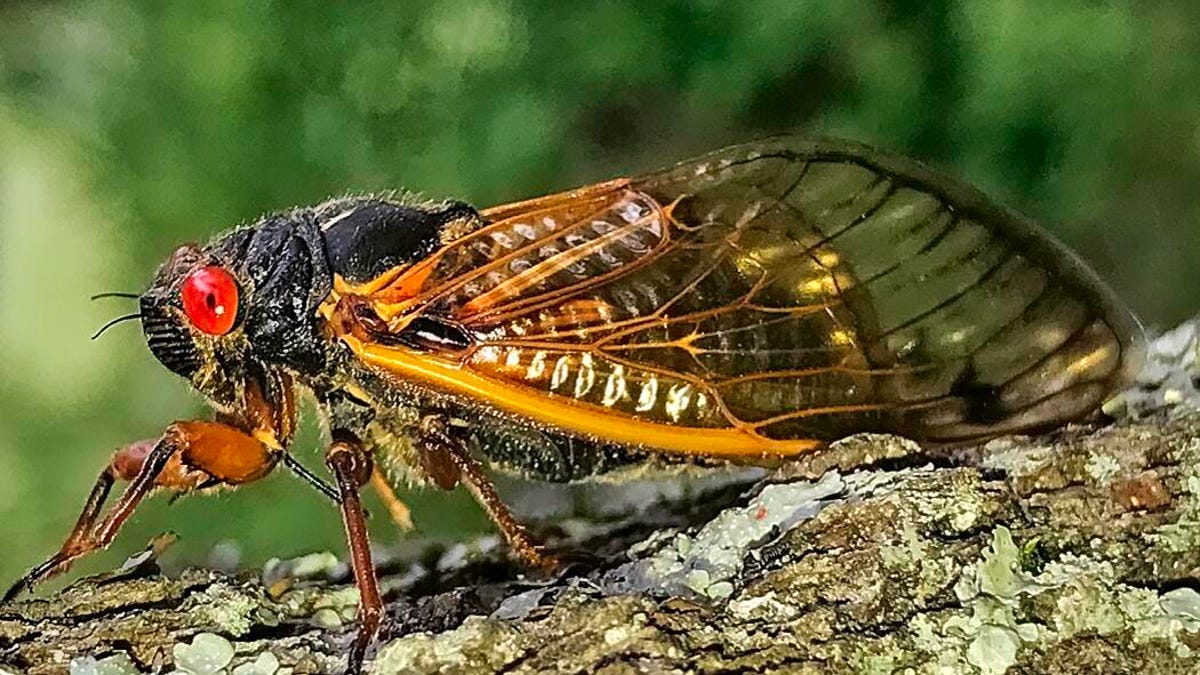Brood X cicadas are so abundant, they're showing up on weather radar
One entomologist didn't believe it at first, but there are that many of the insects.

There's no need to tell people who live in the eastern US the Brood X cicadas have arrived. The plentiful bugs are so loud some people are mistaking their buzzy mating noises for car alarms. But exactly how many cicadas are out there? So many the insects are being picked up by weather radar .
"This is not rain, not ground clutter," tweeted NBC meteorologist Lauryn Ricketts on Monday, sharing a radar image of a big green blob sitting right over the area of Washington DC, Virginia and Maryland. "The Hydrometeor Classification algorithm identifies this as biological in nature, so likely cicadas being picked up by the radar beam."
THIS is not rain, not ground clutter (the radar beam picking up objects close the radar site --which is in Loudoun County).... the Hydrometeor Classification algorithm identifies this as biological in nature..so likely CICADAS being picked up by the radar beam... pic.twitter.com/zTLCzynz5D
— Lauryn Ricketts (@laurynricketts) June 7, 2021
Ricketts' tweet sparked some witty responses, including one citing the scene from Aliens when the Colonial Marines set out on their tragic bug hunt, and another parodying Cloudy With A Chance of Meatballs, writing, "Cloudy With A Chance Of, checks notes, oh hell no."
"Movement. Signal's clean. Range: twenty meters... Eighteen... Seventeen meters... Fifteen meters... Thirteen meters. Man, this is a big fucking signal." pic.twitter.com/lCIA9P2cuo
— Dr (as in physics) Mo' Flo' Mojo ... (@MoFloMoJo) June 7, 2021
Cloudy With A Chance Of, checks notes, oh hell no
— regresstothemean (@regress2themean) June 7, 2021
My god. The cicadas have taken over the radar! https://t.co/DIBbjePQaA
— Bridget has a vax (@baltenburg) June 7, 2021
just me and the boys hanging outside target pic.twitter.com/8x7xTLA9j3
— ❤💙 void (@voideyedcat) June 7, 2021
It is SO loud here in northern Maryland. They are everywhere. But I love them, and the French think they're good luck. My dog wants to eat them. (Sound on.) pic.twitter.com/Tr5BHObEYN
— Acorn Park (@AcornPark) June 7, 2021
The National Weather Service official Twitter account for the Baltimore-Washington area also tweeted about the cicadas making it onto radar.
"You may have noticed a lot of fuzziness (low reflectivity values) on our radar recently," a Saturday tweet read. "The Hydrometeor Classification algorithm shows much of it to be biological in nature. Our guess? It's probably the cicadas."
You may have noticed a lot of fuzziness (low reflectivity values) on our radar recently. The Hydrometeor Classification algorithm shows much of it to be Biological in nature. Our guess? It's probably the #cicadas. pic.twitter.com/i990mEBJnl
— NWS Baltimore-Washington (@NWS_BaltWash) June 5, 2021
The Washington Post reached out to an entomologist at the University of Maryland who did not at first believe the radar images showed cicadas.
"Cicadas are not strong long-distance fliers, they do not migrate, and their biology is tethered to the trees," Daniel Gruner told the Post. But when told radar can in fact detect insects in the tops of trees, the entomologist rethought things.
"If the radar can pick up the returns essentially at canopy level," he told the paper, "then that changes the whole equation."

